Where and How to Buy Amazon Return Pallets? (3X Your Profits with Our Expert Guide)
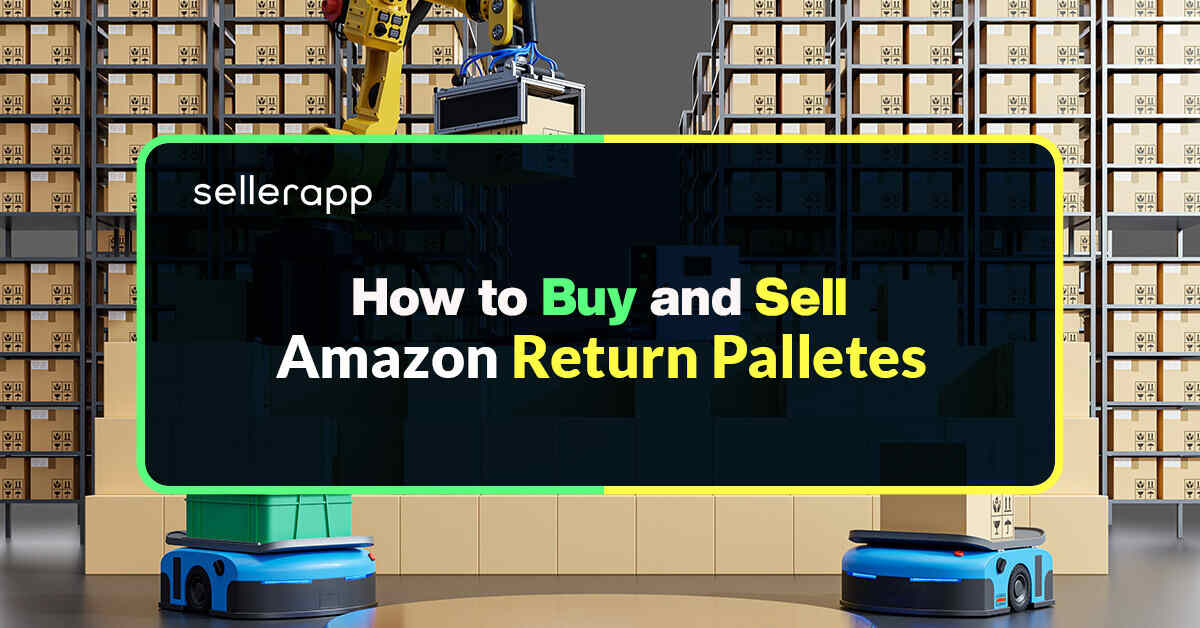
Did you know that when products are returned to Amazon, they often don’t return to the original sellers? Instead, they are bundled into Amazon return pallets and sold to third-party buyers at low prices. These Amazon Return Pallets can be a lucrative opportunity for sellers aiming to buy low and sell high.
But why don’t these products go back to the sellers? Typically, returning products incur a fee for the seller. However, from their perspective, retrieving these items from Amazon’s warehouse may not always be economically viable.
As a result, these returned items take up valuable space in Amazon’s warehouse without generating revenue.
This is where the chance for profit emerges for savvy sellers. By purchasing and reselling these returned products, you can turn a tidy profit.
In this article, we’ll deep dive into the various aspects of Amazon Return Pallets and guide you on how to effectively capitalize on them for profit. After all, for beginners wondering how to buy Amazon return pallets, it’s essential to know the right sources to maximize profits.
Let’s get started!
Here is a quick peek into the article:
- What are Amazon Return Pallets
- How much do Amazon Return Pallets cost
- How to buy Amazon Return Pallets
- Factors to keep in mind while purchasing Amazon Return Pallets
- Pros and cons of selling Amazon Return Pallets
- Tips for selling Amazon Return Pallets
- Final thoughts
What are Amazon Return Pallets?
Amazon Return Pallets or Amazon Liquidation Pallets are large wooden crates that Amazon uses to sell returned products in bulk. Buyers of these pallets can choose to keep the products useful to them and refurbish others to resell and make a profit.
These Amazon liquidation pallets can contain various products, like electronics, clothes, books, furniture, and more. Most of the time, these products can be used, damaged, defective, or unwanted by the customer.
Amazon organizes these products into different pallets and sells them to large liquidation companies or individual customers at discounted prices. Once you know exactly how to buy Amazon return pallets, you’ll find that it’s one of the most efficient ways to source high-quality items for resale.
Note: Buying Amazon Return Pallets can be profitable. But there’s no guarantee about what you’ll get in the box. You may find items that are brand new, broken, spare parts of items, or even empty-boxed.
That’s right! If you don’t examine the pallets before purchasing, you might suffer a significant loss. However, with proper research, you can reduce risks and make a profit.
How much do Amazon Return Pallets cost?
If you’re thinking about buying and selling Amazon Return Pallets, you might wonder – how much do these Amazon Return Pallets cost?
Amazon Return Pallets for sale typically cost between $300 and $400, but the price can vary based on size and content.
For example, a large pallet full of electronic items can cost more than $1,000, whereas a palette full of essential items can only cost between $100-$500.
Apart from the cost of pallets, you also have to consider shipping and refurbishment costs, as they can add up to the cost. Knowing how to buy Amazon return pallets at the right price can make a huge difference in profitability
How To Buy Amazon Return Pallets
As an Amazon seller, you must know that all returned products don’t just vanish into thin air.
Amazon provides a liquidation program where sellers can resell the customer-returned products in the auction to make way for new stocks in the warehouse.
You can buy Amazon Return Pallets directly through this program or from third-party liquidation companies. Most importantly, sellers who master how to buy Amazon liquidationpallets often have a competitive edge, thanks to the diverse range of products they can access at a lower cost.
Now you might be scratching your head, thinking – where can I find these third-party companies that sell Amazon pallets near me?
Well, here we’ve listed some liquidation companies that have Amazon Return Pallets for sale in 2025
Where to buy Amazon Return Pallets?
If you’re looking to maximize profit margins and source high-quality inventory, Amazon liquidation pallets are the way to go. However, with so many vendors in the market, it’s crucial to choose a reputable supplier that offers transparency, value, and a seamless purchasing experience.
Amazon liquidation pallets include a mix of overstock, shelf pulls, and customer returns, making them an excellent opportunity for resellers. While Amazon return pallets specifically contain returned items, liquidation pallets often offer a broader selection of untouched, surplus products. Knowing where to buy Amazon liquidation pallets and liquidation pallets can make all the difference in securing high-value merchandise at competitive prices.
Read more : Resell returned items at a lower price
Below, we’ve curated a list of the best suppliers for Amazon pallets for sale, ensuring that you get premium inventory without unnecessary risks. Whether you’re an experienced reseller or just learning how to buy Amazon liquidation pallets, these trusted sources offer diverse product categories, accurate manifests, and competitive pricing.
UpLiquidation
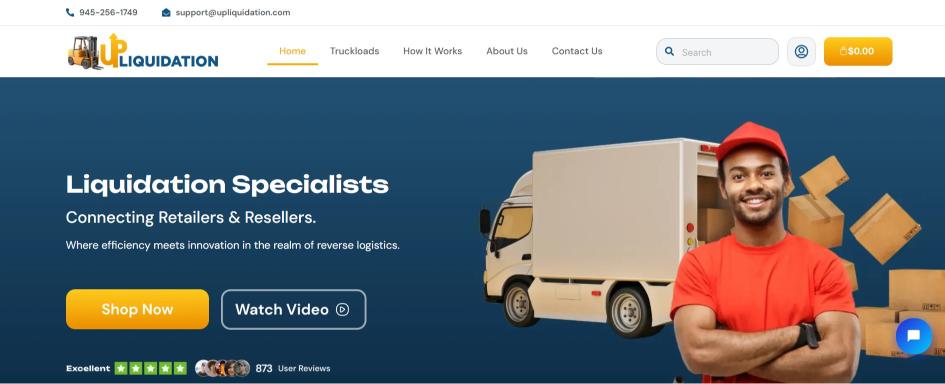
UpLiquidation is an incredible platform and is commonly known as a powerhouse in the liquidation industry. It offers one of the largest selections of Amazon liquidation pallets in the United States. Most importantly, it was named the best Liquidation company in the USA since 2015.
With stringent quality control and detailed manifests, UpLiquidation ensures transparency in every purchase. It’s ultimately, perfect for high volume buyers and fast processing.
In fact, the fast processing is off the charts. Orders take a mere 4-6 hours with immediate freight quotes and dispatch notifications.
On the inventory side, UpLiquidation offers a rather diverse inventory. You can choose from category-specific lots. Moreover, you’ll have unmatched customer support via Phone, email, and even a live chat with experience professionals.
B-Stock
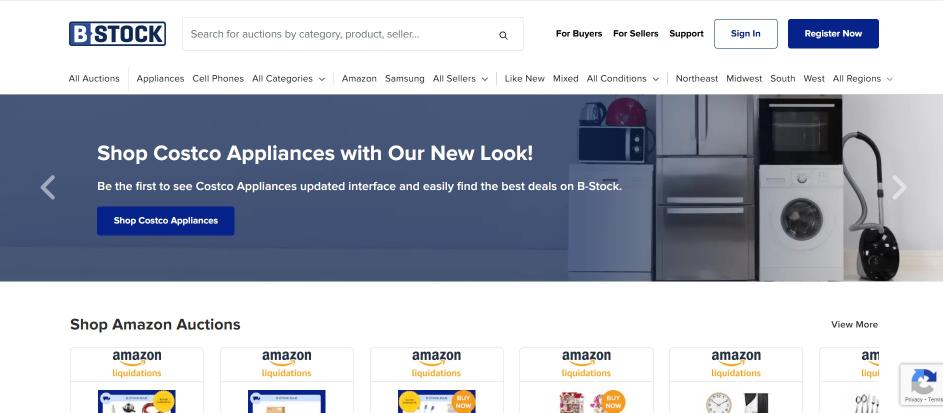
B-Stock is another major player in the game. It’s a rather unique platform as it has exclusive brand partnerships with a ton of major retailers like Amazon, Home Dept, Walmart and Samsung. Meaning, unlike most platforms, you can access pallets that are directly sourced from Amazon, Walmart, Home Depot, Etc.
As for the actual method of acquiring the pallets, the platform offers a bidding system with binding shipping costs. And a filter option to search for the perfect Amazon return pallets to find the right inventory.
Amazon Liquidation Auctions (US)
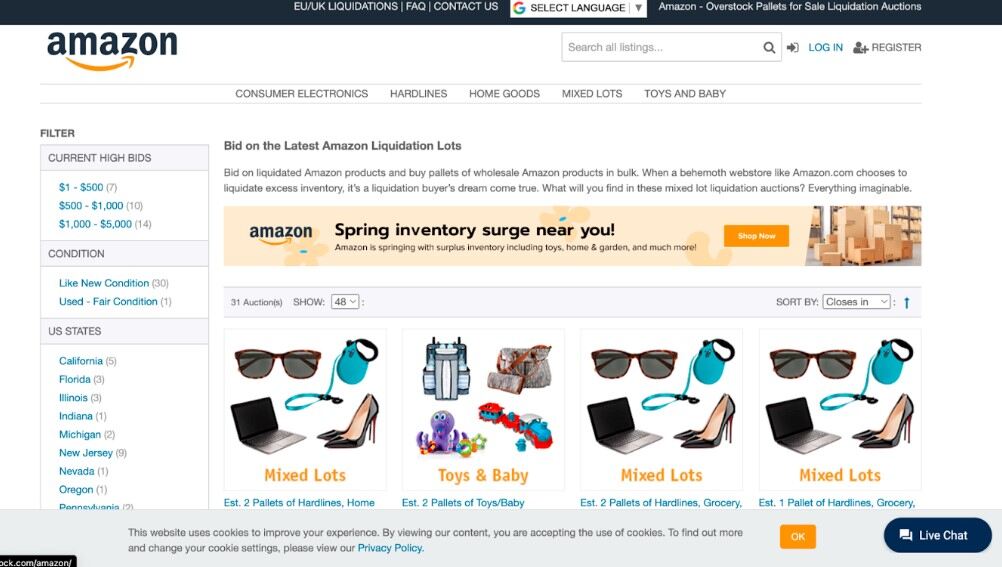
In 2018, Amazon collaborated with B-Stock to introduce Amazon Liquidation Auctions, which allows third-party US sellers to bid on return pallets, ranging from books, apparel, home goods, electronics, and footwear.
More info: Skyrocket Your Reselling Business Profit Margin With Home Depot Return Pallets
To participate in these auctions, sellers must register with B-Stock and submit a valid resale certificate.
More importantly, B-Stock is an affiliate of Amazon, making it extremely reliable. This exclusive partnership is beneficial to the buyer as they can gain early access to pallets and inventory deals before it’s purchased by other liquidation companies.
Here are some pros and cons of Amazon Liquidation Auction:
Purchasing customer returns through Amazon liquidation auctions can be cheaper than sourcing new merchandise, providing an opportunity to maximize profit margins.
Merchandise bought from Amazon Liquidation auctions can often be in as-new condition, increasing the profit potential.
B-Stock functions as an Amazon Bulk Liquidations Store that enables you to buy in bulk, which can help keep costs down for ecommerce businesses.
The Amazon Liquidation Auction process can be time-consuming, requiring at least two to three business days, and larger companies may not have the bandwidth to monitor them closely.
Not all buyers prefer to participate in auctions due to the time commitment and unpredictability of the outcome. Although buying liquidation stock can be profitable, there’s a risk of receiving damaged or unsellable items, which could lead to losses.
Direct Liquidation (US and Canada)
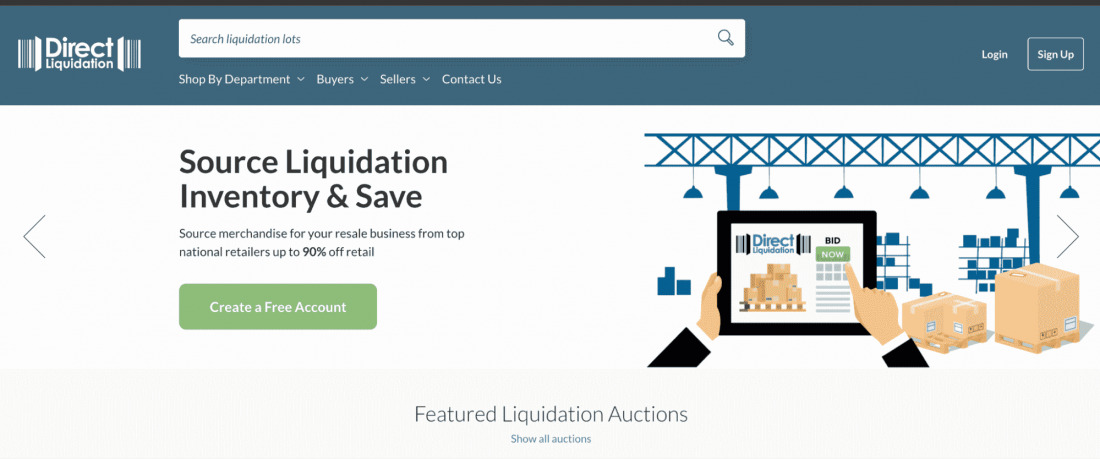
Direct Liquidation is a liquidation marketplace that partners with marketplaces like Walmart, Target, and Amazon to sell returned pallets in online auctions.
Moreover, this retail endorsed platform has been featured in Forbes, Inc and Reuters adding to it’s credibility. You also get access to manifests. Meaning there’s a ton of transparent information on whether the pallets contain salvaged, shelf-pull, and returned products that are clearly labeled.
We recommend Direct Liquidation primarily due to it’s exclusive deals. If you’ve registered with the platform, you can avail amazing deals that can especially help you when you’ll need to purchase several pallets at once or if you’re just starting out.
This platform offers a broad range of liquidation pallets, including categories like electronics, appliances, furniture, etc. Direct Liquidation works directly with big retailers and marketplaces, ensuring the authenticity of the products.
The platform offers outstanding customer service to buyers.
Like with any liquidation pallets purchase, there’s no guarantee of product condition. Certain category pallets have minimal quantity restrictions, preventing small-scale buyers from purchasing. Depending on the item’s condition, warranty coverage for purchased products may be restricted or non-existent.
Liquidation.com (US)
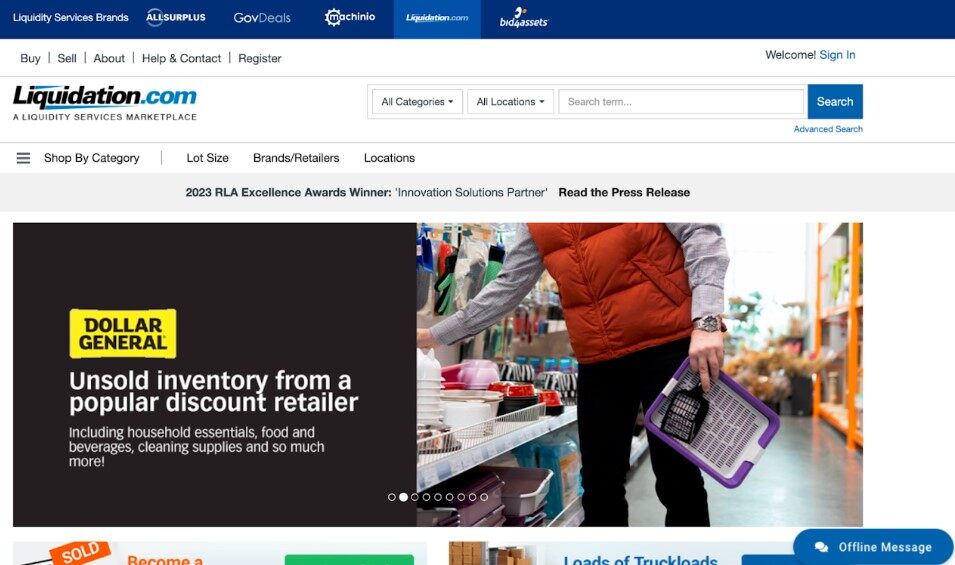
Similar to Direct Liquation, Liquidation.com also sells return pallets from Amazon and other marketplaces. This platform usually sells electronics, household appliances, computers, and industrial and vehicle spare parts.
The price usually starts from $100 but it can increase during the auction.
Non-US customers need to pay via wire transfer. And if the purchase value is above $5,000, then a wire transfer is mandatory for both US and non-US buyers.
This Amazon liquidation store offers great deals on returns pallets, so you can potentially get items often at a lower cost than the original price.
You might come across valuable and resellable items in the pallets, allowing you to make some good money.
Depending on the product or seller, you may or may not get any warranty coverage or guarantee for the condition or functionality of the items you buy.
Since Liquidation.com attracts a lot of buyers, you’ll face tough competition when buying an item, or the price will be elevated in the auction.
BULQ (US)
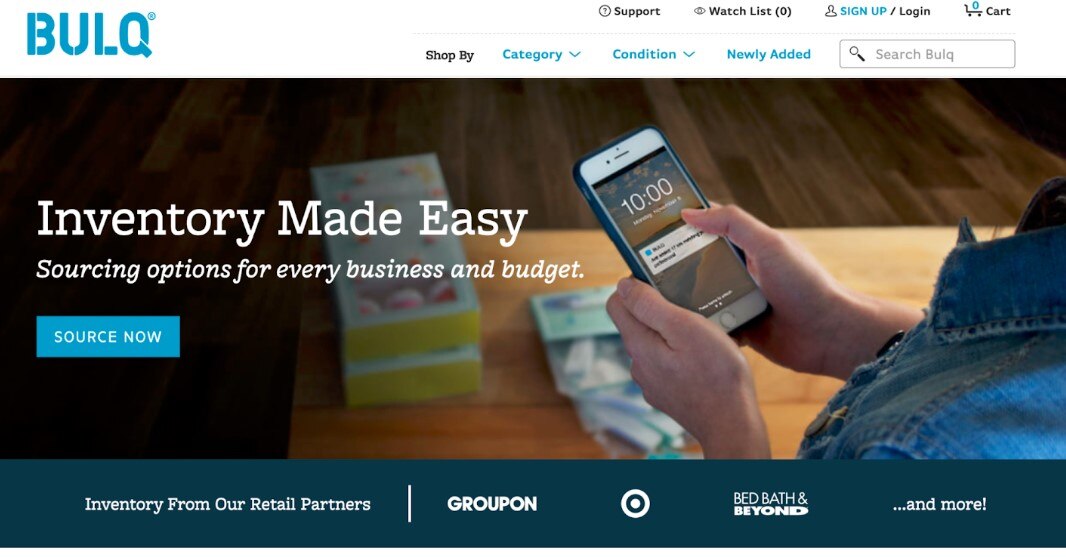
BULQ is another liquidation company headquartered in the United States that lists new return pallets for sale three times every day. The pricing of these items varies depending on the seller and product category. Some prices are fixed, and others are sold through a 48-hour auction.
You can easily browse the clearance section without login, but to purchase, you must register on the platform and provide resale certification during the transaction.
BULQ also provides shipping services for addresses within the United States; in some cases, a flat shipping fee of $30 is applied.
Usually, the shipping cost changes based on factors such as weight, palette size, and delivery address.
BULQ offers a wide range of products from big-box store retailers in categories like apparel, home and garden, toys and baby, electronics, and more. New inventory arrives three times daily, which provides continuous opportunities for sellers.
Bulq.com is an Amazon liquidation store that is specifically designed for resellers, offering bulk purchasing options, discounted pricing, and access to a community of resellers.
As with any liquidation platform, there is a risk of buying unwanted or defective products returned by customers, which may be damaged or unsuitable for reselling. While manifest information is provided, buyers may have limited ability to customize or choose specific items within a pallet.
Buyers must arrange the shipping and handling costs, which can vary based on location and pallet size.
Additional read: How to liquidate excess inventory on Amazon?
888Lots
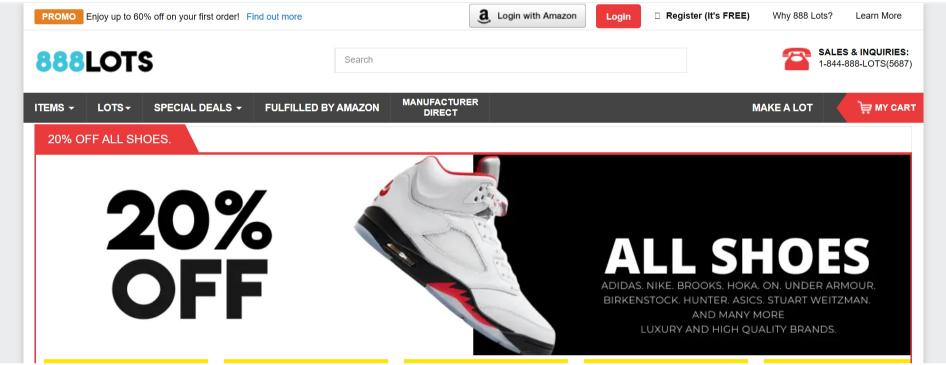
888Lots makes it super easy for new sellers to get started as it offers pallets with low minimum order quantities and discounts on first-time purchases. Specifically, you can choose from small, medium, large or even truckload options. One of the benefits is that the platform offers 60% off on first orders.
Another advantage of shopping at 888Lots is that it offers everything from baby products to electronics. Additionally, it provides more than 100,000 brand-new products across over 30 categories and offers fixed-priced pallets. Buyers can negotiate the price of each with their sales representative.
Each pallet contains a detailed description of the products, including Amazon ASIN numbers, Amazon UPC codes, descriptions, Amazon reviews, sales rank, and a downloadable manifest.
However, there’s no guarantee of the product condition you’ll get after purchasing the product. Buyers have to bear the shipping and handling costs after purchasing the pallets.
BlueLots
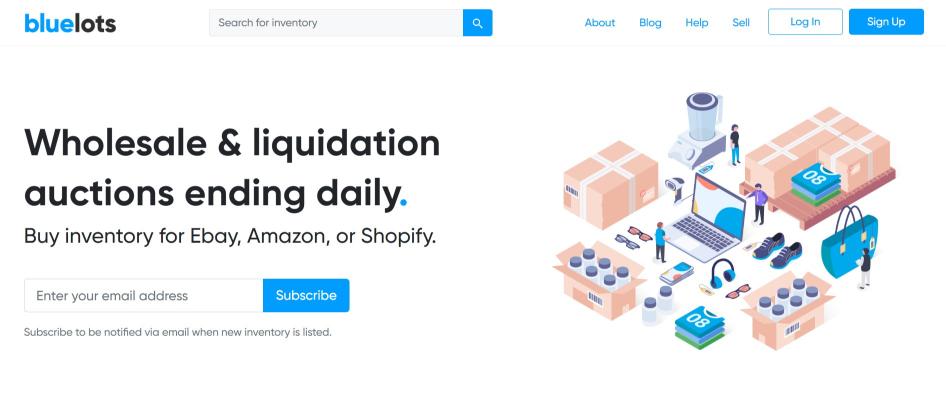
BlueLots is hands down best Amazon liquidation pallets platform when it comes to nice product categories. In fact, you can actually filter pallets by category, condition and auction type. It also comes with a simple UI that’s easy to use, which will help search an buy products quickly.
There are also specialized categories that focus on home goods, electronics, sporting goods, and clothing. Of course, like more liquidation platforms, you have an auction and instant buy option.
Ultimately, buying Amazon liquidation pallets and return pallets is one of the most effective ways to secure profitable inventory. However, it’s important to understand purchasing from the wrong source can result in acquiring pallets with faulty products that will turn out to be more of a liability than an asset.
Moreover, if you’re planning on turning this into a business, you might run into loss by shopping at the wrong liquidation store. This why, we curated a list of the best Amazon liquidation pallets for resale. The vendors we’ve specifically listed above offer reliable sourcing with incredibly transparent pricing and the extremely necessary — customer service.
So, if you’re ready to take on the Amazon Reselling business and maybe even take it to the next level, we recommend you explore these platforms.
- Via Trading (US),
- Quicklotz (US), and
- Wholesale Ninjas (US)
Can I buy pallets of Amazon returns?
Yes, you can buy Amazon liquidation pallets, which often contain return, shelf-pulled, damaged and overstock inventory. Fundamentally, these pallets are sold through third-party liquidation marketplaces that commonly partner with Amazon to resell these excess stock.
Trusted sources where you can buy Amazon pallets for sale include:
- B-Stock (Amazon’s official liquidation marketplace)
- Direct Liquidation
- 888Lots
- BlueLots
- UpLiquidation
These companies/ liquidation platforms provide access to Amazon return pallets. Typically these pallets are categorized by their condition, such as “new,” “like new,” or “uninspected returns.” It’s important to note that buying liquidation pallets is a cost-effective way to acquire inventory for resale, but the condition of the products will vary. Therefore, you’re fundamental due diligence is incredibly important.
Is the Amazon return pallet legit?
Yes, Amazon return pallets are legitimate, even though it might seem unreliable or a scam due to social media. It is hands down a very reliable business model. However, the quality and reliability of what products you will receive will depend on the supplier you’ve chosen.
We primarily recommend you source your Amazon liquidation pallets that are sold through reputable liquidation platforms. Especially, as scams do exists and a common on social media and on unofficial websites.
At SellerApp, we’ve researched, interviewed suppliers and have put together a list of best practices to ensure legitimacy:
- Only buy from trusted platforms like B-Stock, Direct Liquidation and the others mentioned on this list.
- Make sure to take a look at all the detailed manifest that list the contents for each pallet.
- Read reviews from other buyers to verify the seller’s reputation. We can’t stress how important this is.
- You will come across deals that are “too good to be true” on fraudulent sites that often promise brand new high value goods at an unrealistically low price.
- Make sure the pricing is fair.
- Please make sure that the company offers customer service.
While Amazon liquidation pallets can be profitable and legit, expect some defective or unsellable items.
How do you order Amazon unclaimed pallets?
Ordering Amazon unclaimed pallets is an pretty straightforward process. However, it also does depend on the liquidation marketplace. For some platforms, you may have to provide certain documentation such as your business license, reseller license or tax info to ensure compliance. Here’s how you can get started:
- Go to Amazon’s official B-Stock marketplace or platforms like Direct Liquidation, 888Lots, or one of the other companies on our list:
- Register an account. As mentioned earlier, some platforms require business verification to access bulk liquidation sales.
- Browse available pallets. Specifically, use filters to sort by category, condition, and price. Look for Amazon returns wholesale pallets if you specifically want returned merchandise.
- Check the manifest. Some Amazon liquidation pallets come with a manifest (inventory list), detailing the products inside.
- Most off the sites operate on auction models, so you may need to bid against other buyers. Some allow outright purchases.
- Finally, you’ll need to factor in shipping costs, as liquidation pallets are large and often require freight shipping. Some marketplaces offer calculated shipping, while others require arranging your own freight.
What are the requirements for Amazon pallet delivery?
Since Amazon liquidation pallets are bulky and require freight shipping, there are key requirements for receiving a pallet order:
You’ll need a commercial address with a loading dock or forklift if you’re ordering multiple pallets or truckloads. Of course, some companies allow residential delivery, but it may cost extra and require a liftgate service. Therefore, we recommend you reach out to customer service
Additionally, shipping costs vary by location, pallet size, and weight. Most liquidation sites provide estimated freight charges before purchase.
On the other hand, if you are trying to get it shipped to a residential area, check with the supplier, if you can pick it up yourself and save on shipping.
The most important step that most reseller skip is inspecting the Amazon return pallets on arrival and document any damage for dispute resolution.
Factors to keep in mind while purchasing Amazon Return Pallets
Amazon Return Pallets are a profitable way to resell products, as long as you know what to look for and how to avoid potential pitfalls. Now, understanding how to buy Amazon return pallets wisely is essential, especially when navigating multiple liquidation platforms. Getting it wrong can not only result in you losing a significant amount of money.
Here are some things you should consider when buying Amazon Return Pallets:
Compare liquidation platforms
Typically, you can buy pallets for cheap directly from Amazon or from its official b2b platform Amazon Liquidation Auctions. The more you buy from these platforms, the cheaper the costs.
However, you won’t always be able to bag the best pallets directly from Amazon as the auctions are highly competitive and liquidation companies with more resources will usually beat you. Therefore, head over to top liquidation pallet companies and check out their catalog.
With numerous liquidation companies in the market, it’s crucial to research and compare different options. Look for companies that offer returns pallets at lower costs, as this can help maximize your profit margins.
Start with a small purchase
Before diving into large investments, make a small initial purchase. It will allow you to better gauge the buying experience and understand the process. Avoid the temptation to buy expensive name-brand goods right away, as it can be risky.
Be cautious with electronics
If you’re new to buying Amazon liquidation pallets, avoid purchasing pallets of used electronic items. There is a high chance that these Amazon returns may not work, and if you lack the expertise to fix them, you could end up with a total loss.
Refurbish for profit
While reselling products directly on Amazon would be the best option starting out. Seasoned resellers use the process of retail arbitration to rake in profits.
They buy Amazon liquidation pallets, refurbish the merchandise, and resell the product at higher prices on various marketplaces or their ecommerce store.
However, this approach is not recommended to those just jumping into the world of Amazon return pallets. Ideally, get some experience, master the process, and figure out a system to refurbish the products before executing this method.
Avoid certain categories
Stay away from certain categories of products to minimize risks. For example, avoid baby items for safety concerns. Additionally, avoid cooking products, as they can be difficult to resell.
Note: Avoid any Amazon returns with multiple parts and accessories, as there’s a higher chance of missing or damaged components.
Look for simplicity
Opt for simpler items with a higher chance of working properly and being easy to resell. For example, exercise dumbbells can be a good option. Also, name-brand goods are desirable, but ensure the probability of defects is low (again, avoid electronics in this case).
Watch out for shipping costs
Before purchasing an Amazon return pallet or any other type of liquidation pallet, be mindful of the shipping expenses. Some liquidation companies charge for shipping, which could potentially exceed the amount you paid for the goods. Always check the freight costs beforehand to avoid surprises.
Also read: Shipping to Amazon FBA Rapid Express Freight
Pros and cons of selling Amazon Return Pallets
If you’re considering selling Amazon Return Pallets, you should weigh the benefits and drawbacks before diving into this venture. Here are some of them:
Benefits:
Low costs: Amazon Return Pallets reduce the cost of sourcing. These pallets are available at discounted prices, meaning you can start your business with as little as a few hundred dollars. Knowing how to buy Amazon return pallets effectively can significantly impact the profit margins.
Easy reselling: Selling Amazon Return Pallets provides you with various platforms to resell your products. Whether it’s through e-commerce sites, garage sales, or social media, you have flexibility in finding potential buyers.
Potential for higher profit margins: Since Amazon Return Pallets are sold at discounted prices, there is a potential for higher profit margins when selling. With careful selection and strategic selling, you can achieve significant profits even with a small initial investment.
Drawbacks:
No product description: Some liquidation companies do not provide any information about the products inside the pallets. So, you can end up purchasing pallets containing empty boxes or damaged goods.
Limited opportunity for growth: There’s no guarantee of the type and condition of products you can get on Amazon Return Pallet. It can hinder your ability to grow and scale your business long-term.
Unsellable items: In Amazon Return Pallets, you may occasionally come across products that are too damaged to resell. This can lead to losses.
Tips for selling Amazon Return Pallets
Now you’ve learned the pros and cons of selling Amazon Return Pallets and want to get your hands on them!
But wait for a moment!
There are still some tips you need to keep in mind before selling Amazon Return Pallets in 2025. Here are some of them:
Compare products on different marketplaces
Before buying a liquidation pallet, compare different liquidation companies/Amazon return stores, and find pallets at a lower cost. If you’re going to an offline auction, try to inspect the pallet before purchasing. This will allow you to better judge each pallet and negotiate the best price.
Ensure you consider shipping costs in your calculations, as they can eat into your potential profits from Amazon return pallets.
Sort and categorize items
After receiving your pallet, inspect and categorize the products. Assess the packaging and condition of the products. See if the products are authentic or come with a manufacturer’s warranty.
Many times pallets come with missing or faulty parts. Replacing or repairing the parts can make the products sellable and generate a higher resale value.
Bundle different products
Refurbishing and repairing products is not enough. Bundling multiple complementary products is also a great way to increase the average order value of the products.
For example, if you want to sell some product from a pallet of computer components, It’s better to assemble a CPU with a mix of new and refurbished products and sell that at a premium.
Price your products right
Browse various online markets to understand the current price of the product. You’ll need to set your selling price lower than the new items. Don’t forget to factor in other expenses, and always keep an eye on your potential profits.
Choose Amazon manifested pallets over Amazon mystery boxes
Amazon mystery pallets are cheaper. While buying these pallets would make for a great YouTube video, it does come with a high risk, as you don’t know exactly what you’re getting.
On the other hand, Manifested pallets are more expensive but provide a detailed description of the contents, including item names, quantities, product descriptions, and suggested retail values.
So, if your goal is reselling, always choose a Manifested pallet.
Final thoughts
Selling Amazon Return Pallets can indeed be profitable, but it’s important to remember that it also comes with its share of risks. If you’re lucky, you may get a pallet full of items prime for reselling, or you may get stuck with a pallet full of broken and defective items.
On top of that, selling Amazon Return Pallets at profits requires careful inspection, sorting, cataloging, strategic pricing, and effective marketing.
If you are the kind of seller who loves challenges, reselling liquidation items can be an exciting venture for you.
Now that you know how to sell Amazon Return Pallets, it’s time to roll up your sleeves and get started.
Do you have any more questions regarding Amazon Return Pallets? Let us know in the comments below!
Additional read:
What is Amazon Premium A+ content?
How does Amazon Marketing Cloud work?
A Joint Analysis by Payoneer and SellerApp
Amazon Catalog Management: The Only Guide You’ll Ever Need
Firefighting Negative Reviews on Amazon: A Seller’s Guide
11 Amazon Seller Forums & Communities That Are Highly Useful
How to Rank Your Products for Amazon A10 Algorithm
Target Return Pallets: What You Need to Know
Walmart Return Pallets for Sale: Everything You Need to Know




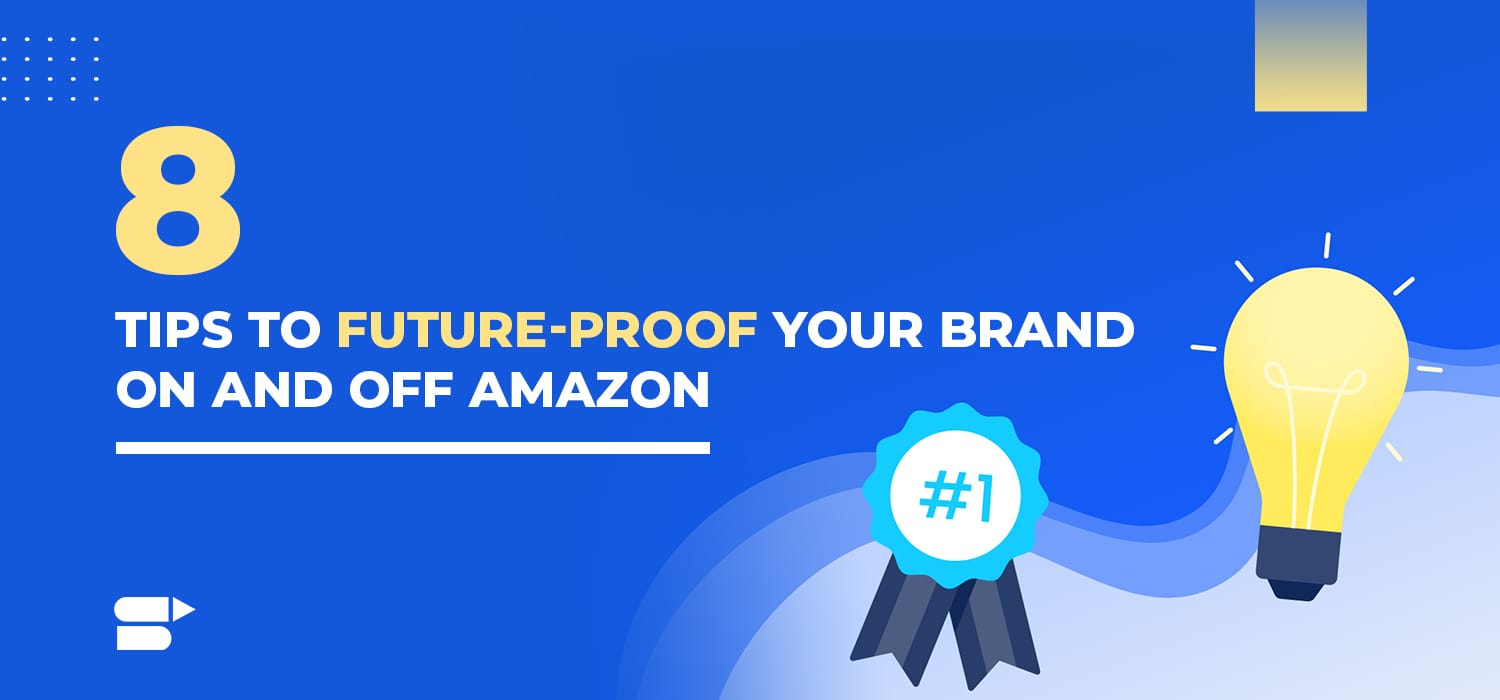
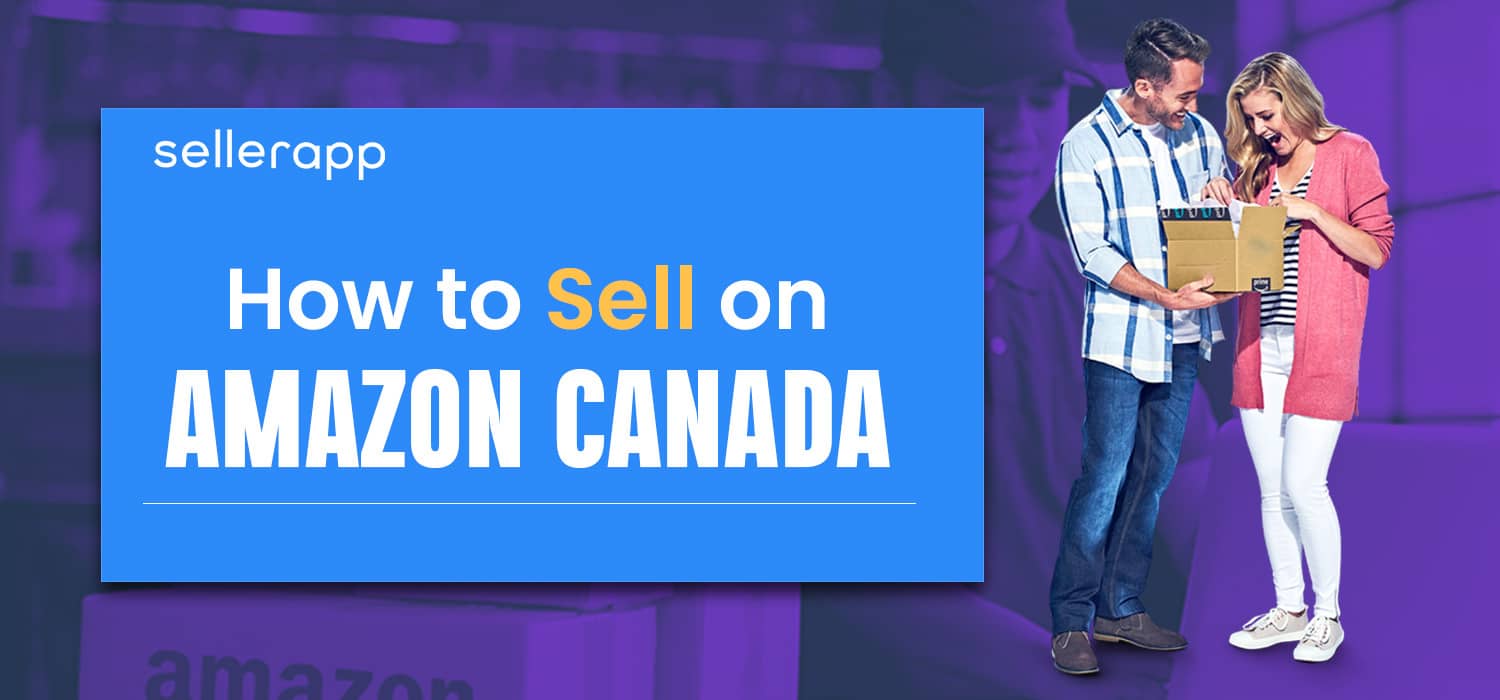

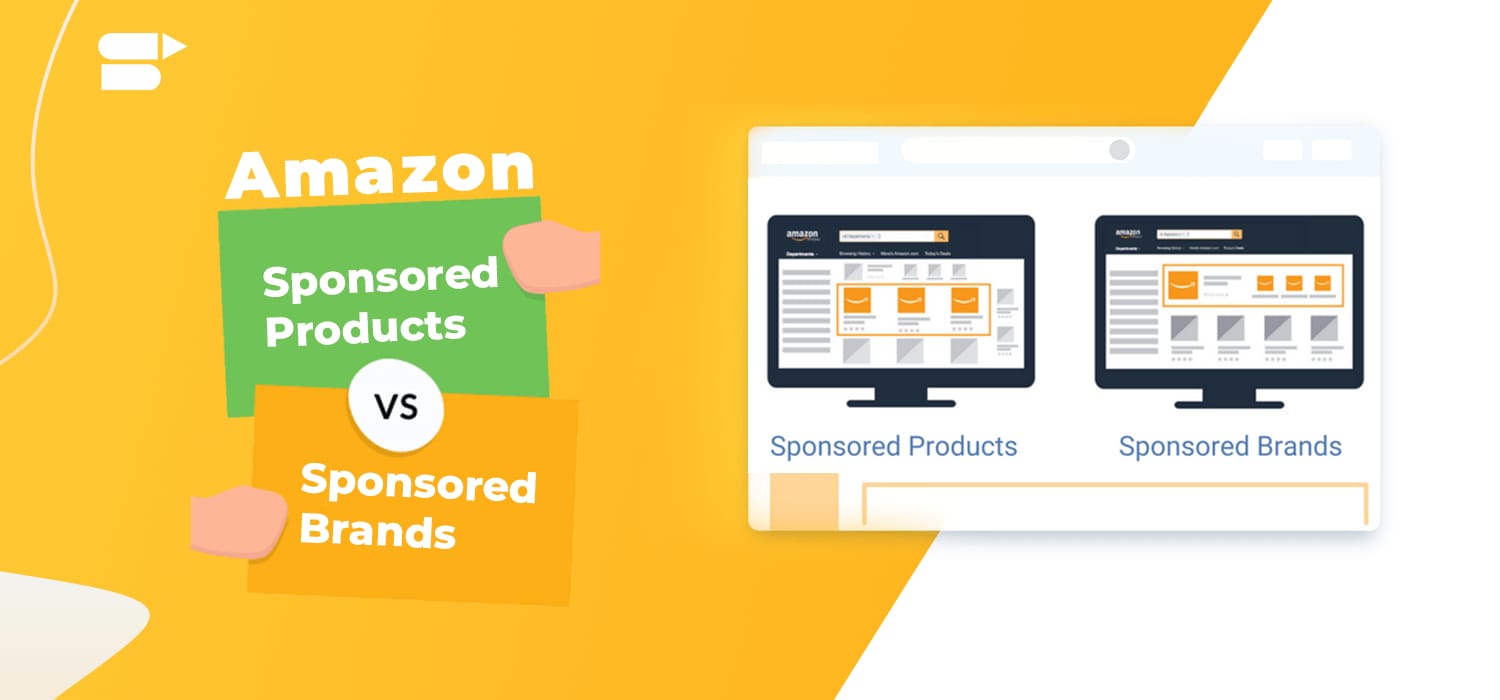



Vijay Kumar
November 28, 2023Very good insights!!
Clare Thomas
March 7, 2024Glad you liked the article.
Oscar
November 29, 2023Your blogs are helpful!!
Clare Thomas
March 7, 2024Thank you.
Larry
February 21, 2024Very informative. Info. Is appreciated.
Clare Thomas
March 7, 2024Very happy to hear that.
Michael Thomas
August 9, 2024Thanks for the guidance, Must read article for this week.
Clare Thomas
September 6, 2024Thanks for your valuable feedback.
Jacob Daniel
August 15, 2024Interesting take, Appreciate this.
Clare Thomas
September 6, 2024Thank you.
Aria Belle
August 20, 2024So informative, helped a lot.
Clare Thomas
September 6, 2024Happy to hear this.
Ethan Parker
August 30, 2024Appreciate the details, Great content for this week.
Clare Thomas
September 6, 2024Thanks for your valuable feedback.
Evelyn Paige
August 31, 2024Very inspiring, Really enjoyed this read.
Clare Thomas
September 6, 2024Glad you like the article.
Daniel Joseph
September 2, 2024Very informatic, Thank you for the updated content.
Clare Thomas
September 6, 2024You are welcome.
Scarlett Hayes
January 3, 2025I learned so much from this blog! It’s refreshing to see such a thorough and balanced take on how to buy Amazon return pallets. The examples you gave and the practical tips make this a must-read for anyone interested in this area. Great work!
jamescarter
January 3, 2025This is one of the most comprehensive articles I’ve read about Amazon return pallets. The information on finding reputable sources and the potential profitability was exactly what I was looking for. Thanks for sharing your expertise
Carlos Díaz
January 3, 2025Fantastic post! The step-by-step guide on how to buy amazon return pallets and understanding what to expect was super insightful. Your writing style is engaging and makes even complex topics easy to grasp. Thanks for sharing!
Luca Johnson
January 3, 2025Great article! I really enjoyed how you broke down the concept of Amazon return pallets and explained how and where to buy it. Thanks for sharing such valuable information.
Sophia Martinez
January 3, 2025I absolutely loved this article! The way you explained how to buy Amazon return pallets was not only clear but also very engaging. It’s fascinating to learn about how this concept works and the opportunities it can present for sellers or small business owners.